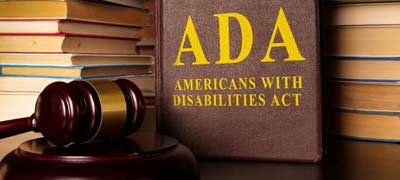Unless you deal with your own disability, there are likely many things you take for granted. Getting out of bed and into the shower on your own, driving yourself to work and even reading this article may take little effort. However, some citizens of California face a constant challenge to perform these and other activities.
As a business owner, you certainly want to make your establishment as welcoming as possible. One way you do so is by complying with the regulations in the Americans with Disabilities Act. This law requires buildings that are open to the public to guarantee access to those whose disabilities may make it a challenge for them to get around. For example, you may have handicap parking spaces in front of your building or safety bars in the public bathroom. However, have you considered the accessibility of your entrance?
A welcome mat isn’t welcoming enough
Someone who is wheelchair bound or who uses a walker may have difficulty ascending even one step to get to your business’ front door. Replacing that step with an ADA-approved incline or creating an alternate entrance that connects to all areas that are wheelchair accessible would comply with the law and allow freedom of access to those with disabilities.
Once your customers reach the door, however, will they be able to open it? Once they open it, will they be able to pass through it? ADA has specific guidelines for creating an entry that easily accommodates wheelchairs.
Doors and openings
Remembering that those in wheelchairs may not be able to reach as high as someone who is standing, the ADA stipulates that you mount door handles no higher than 48 inches from the ground. Those knobs cannot require the twisting of the wrist or a pinching motion to open, and they must require minimal force unless it is a fire door. Because those with disabilities may not be able to move as quickly through the door, it must take at least three seconds to open and three seconds to close.
To accommodate a wheelchair, ADA sets a 36-inch minimum clearance around the door with 32 inches between the face of the door and the opposite doorstop in an entryway. The threshold for your entryway must be lower than ½ inch unless you have a sliding door, which requires ¾ inch or lower. This will allow a wheelchair to glide over it with ease. Of course, it will be your responsibility to keep the entry clear of obstructions and ensure the floor is level and smooth.
Assistance with compliance
You may be confused about what the law requires of you, and that is understandable. Many little details exist in the laws and guidelines that can get you into trouble if you overlook them. There are also many myths and misconceptions that you may read online or hear through the grapevine. To ensure you have the most comprehensive and accurate information about ADA requirements for your business, you would benefit from the assistance of an experienced and knowledgeable attorney.

